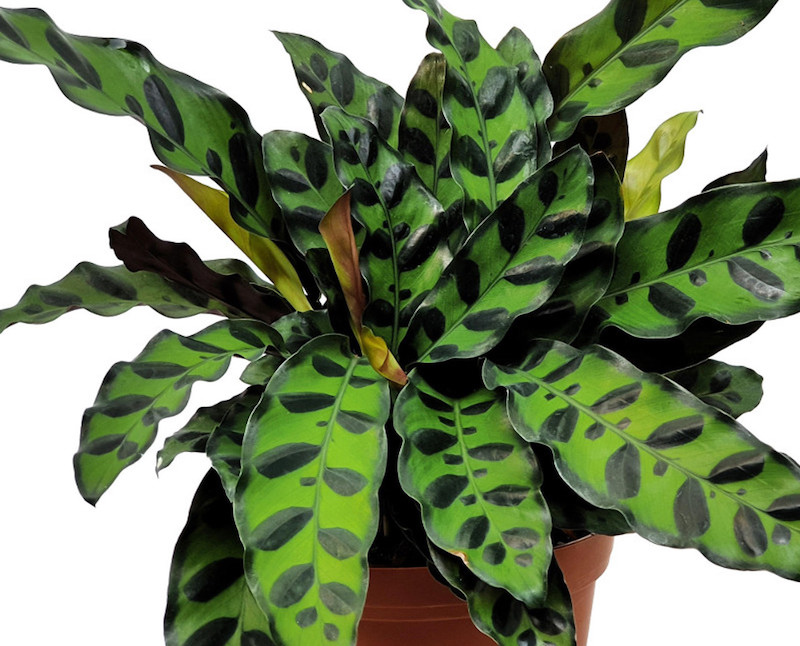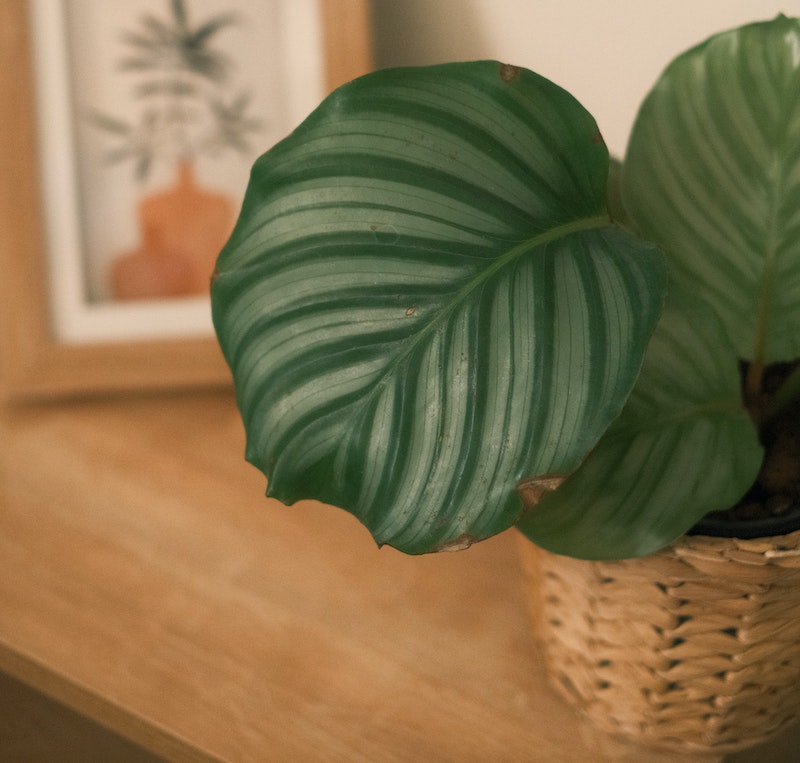Repotting is a normal part of houseplant care. Plants may need to be repotted or moved into a new pot because they have outgrown their old pot or because you want to provide better care for the plant. Calatheas are lovely houseplants known for their vibrant foliage and prefer to be repotted yearly or at least every other year. Repotting your calathea with fresh soil every so often keeps the plant healthy and actively growing. Moving your plant to a new pot can also be an opportunity to feature a decorative container and better coordinate with your space.

Potting Calathea
Place your hand over the soil and tip the pot to remove the calathea from the pot. Gently shake the plant to remove excess soil. Avoid disturbing the roots as much as possible. Prepare the new, larger pot by filling it halfway with fresh potting soil.
Place the root ball in the new pot and fill the space around the roots with more soil until the container is full. Gently press the new soil into place and water the calathea until water drains through the pot.
Repotting Calathea
Calathea plants do not like to be crammed in their pot or rootbound. You can tell your calathea is rootbound when the roots poke through the holes in the pot or if growth slows during the spring and summer when the plant should be actively growing. A plant that has outgrown its pot could likely use fresh soil to support continued growth.
Most plants need to be repotted when they are rootbound, but it’s also common to repot when the pot is damaged or broken, or if you want to swap out the decorative pot to match your space.
Best Soil For Calathea
The best soil for calathea plants will be moist but well draining. Potting mixes that include orchid bark or perlite are ideal. The potting mix should remain loose, promoting healthy root development and allowing excess water to drain. Most houseplant potting mixtures are suitable, or select a blend specially formulated for tropical plants.

Calathea Drainage
Drainage is important for all plants but incredibly important for calathea. This plant does not like to have wet feet, so ensuring the soil drains and no excess water collects is vital. It is best practice to plant calathea in a pot that has drainage, using a saucer to collect runoff. Alternatively, you can plant your calathea in a nursery pot and slip it into a decorative cachepot to collect excess water. Always empty the saucer or outer pot, so the roots never sit in standing water.
 |
Author Alison Cotsonas - Published 03-07-2023 |
